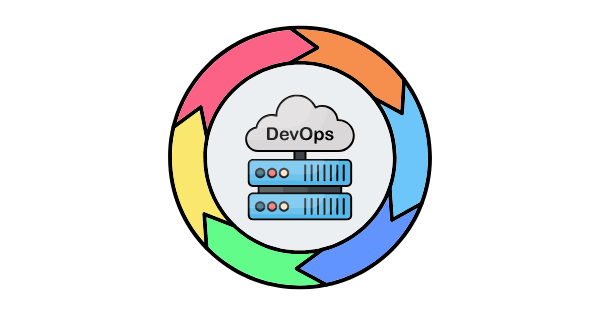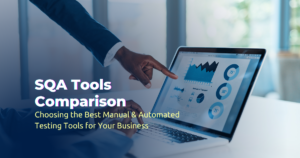The History of Software Testing
Software testing, a key aspect of computer science, has evolved from a small part of software development to a significant industry. The motives and techniques that drive modern software testing procedures are revealed by looking at the testing history. For an extensive understanding of software testing, it is essential to recognize the significant turning points in its growth.
First Processing and Identification of Mistakes
Programming testing can be followed back to the principal PCs during the 1940s, which started processing and mistake discovery. Even though testing stayed a casual cycle, programming these machines was testing and blunder-inclined. Software engineers conducted direct experiments to guarantee the code delivered the ideal results. Trailblazers like Naval commander Elegance Container, who broadly recognized the first “bug” as a moth trapped in a PC’s transfer, promoted the expression “troubleshooting.” To start with, programming testing and investigating were equivalent.
Structured testing’s emergence
Structured testing began in the 1960s as software complexity rose, particularly in military and space programs. Structured approaches were introduced, and testing emerged as its distinct phase in the software development lifecycle. Techniques like “Unit Testing” and “Integration Testing” were formalized by IBM, a central computing company at the time. Even though debugging and not quality assurance were still the primary goals of testing, the concept of ensuring reliability through structured testing began to gain traction. Methodologies like “Black Box Testing” (testing without understanding the internal workings) and “White Box Testing” (testing with an understanding of internal logic) became more formalized by the late 1970s. Testing frameworks and guidelines were developed to make testing a routine and repeatable.
The emergence of software quality assurance (QA) models
QA and structured software development methodologies like the Waterfall model, in which testing is a clearly defined phase following development, emerged in the 1980s. The Waterfall model, with its sequential and linear approach, significantly influenced the formalization of Quality Assurance (QA) as a subfield of software engineering. Testing, in this model, is aimed at meeting customer requirements and guaranteeing software quality. The term “verification and validation” (V&V) was first used in this decade. Validation ensures the correct product is being developed, while verification ensures the product has the proper structure.
Agile development with automated testing
In the 1990s, software testing experienced a significant transformation due to the rise of automated testing and agile development practices. The software development life cycle is expressed with the arrival of Agile methodologies. It also enhanced iterative development and ongoing testing. Testing became a continuous part of the development process instead of confined to one specific stage. “Test-Driven Development,” also known as “TDD,” is a methodology in which developers create tests before writing actual code.
In addition, ‘automated testing tools,’ like WinRunner, LoadRunner, and Selenium, developed quickly during this decade. These tools played a crucial role in the evolution of software testing, making automated testing necessary for managing recurring test cases and continuous integration.
The era of DevOps and Agile
The early 2000s saw the adoption of DevOps, a methodology that brings together operations and development, and the consolidation of Agile development practices. Continuous Integration and Continuous Deployment (CI/CD) was introduced by DevOps, which allows software teams to deliver updates faster than ever before by testing and deploying code frequently.

During this time, automated testing techniques replaced manual testing, focusing on speed and financial systems. Regarding CI/CD pipelines, solutions like Jenkins and Docker are crucial. After that, frameworks for test automation were created to organize load, security, and performance testing and guarantee product dependability in various settings.
AI-driven continuous testing and quality
From 2010 to the present, continuous quality and AI-driven testing The integration of artificial intelligence (AI) and machine learning (ML) into testing over the past ten years has made more intelligent automation and predictive analytics possible. Testing now aims to ensure consistent quality throughout the development process rather than merely identifying errors. It is now incorporated into each stage rather than a stand-alone step.
Two widely used techniques are:
Shift-left testing: It is a modern testing technique where the development, QA, and operations teams collaborate early on in the development process. This method lowers the possibility of significant flaws later in the development cycle by enabling the early detection and resolution of possible problems.
Behavior-driven development (BDD): The goal of behavior-driven development (BDD) is to define and verify software behavior from the user’s viewpoint.
What to Take Away
- Software testing has evolved from an independent discipline of structural debugging
- Modern testing techniques are now dependent on automation and continuous improvement
- Testing is incorporated at each stage of the software life cycle to further improve quality
- The use of machine learning and artificial intelligence techniques is making testing more effective and qualitative.
Conclusion
To ensure application quality, software testing has progressed from simple mistake detection to a complex, comprehensive technique. Comprehensive software testing will become more important as AI and continuous quality methods become popular. Even advanced testing techniques will be required to deliver dependable and practical applications.













